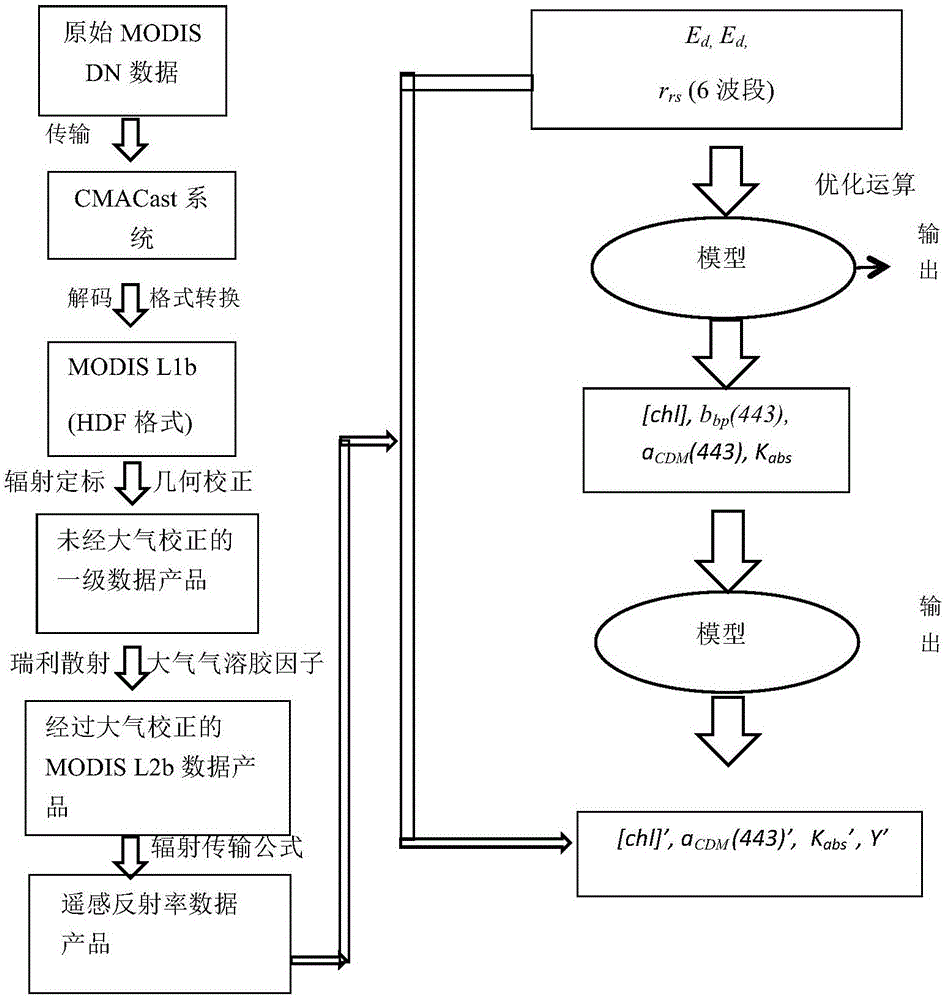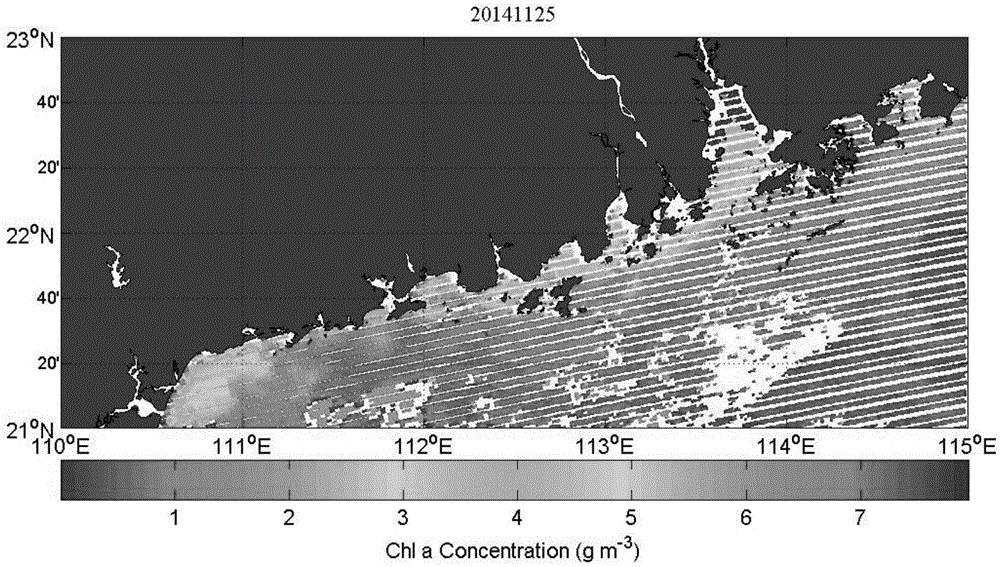Remote sensing retrieval method for extracting chlorophyll concentration distribution information of complex water body
A technology of chlorophyll concentration and distribution information, applied in the field of water quality analysis, can solve the problems of poor differentiation of optical signals, low reliability, poor application effect, etc., and achieve good data support and good reflection ability
- Summary
- Abstract
- Description
- Claims
- Application Information
AI Technical Summary
Problems solved by technology
Method used
Image
Examples
Embodiment Construction
[0035] The present invention will be described in detail below in conjunction with the accompanying drawings.
[0036] This implementation takes the red tide event that occurred in the coastal waters of western Guangdong on November 24, 2014 as an example, and uses the MODISL0 data of the CMACast data transmission system as a remote sensing image to describe in detail the process of extracting chlorophyll concentration distribution products along the coast of South China using the method described. figure 1 It is a flow chart of the basic chlorophyll concentration inversion method described in the implementation of the present invention. Such as figure 1 Said, belonging method comprises steps:
[0037] A: Through the CMACast data transmission system, the MODISL0 original data on November 24, 2011 was received. The CMACast data transmission system converted the MODISL0 original data into the MODISL1b data in hdf format through the decoding algorithm.
[0038] B: Use Matlab so...
PUM
 Login to View More
Login to View More Abstract
Description
Claims
Application Information
 Login to View More
Login to View More - R&D
- Intellectual Property
- Life Sciences
- Materials
- Tech Scout
- Unparalleled Data Quality
- Higher Quality Content
- 60% Fewer Hallucinations
Browse by: Latest US Patents, China's latest patents, Technical Efficacy Thesaurus, Application Domain, Technology Topic, Popular Technical Reports.
© 2025 PatSnap. All rights reserved.Legal|Privacy policy|Modern Slavery Act Transparency Statement|Sitemap|About US| Contact US: help@patsnap.com



